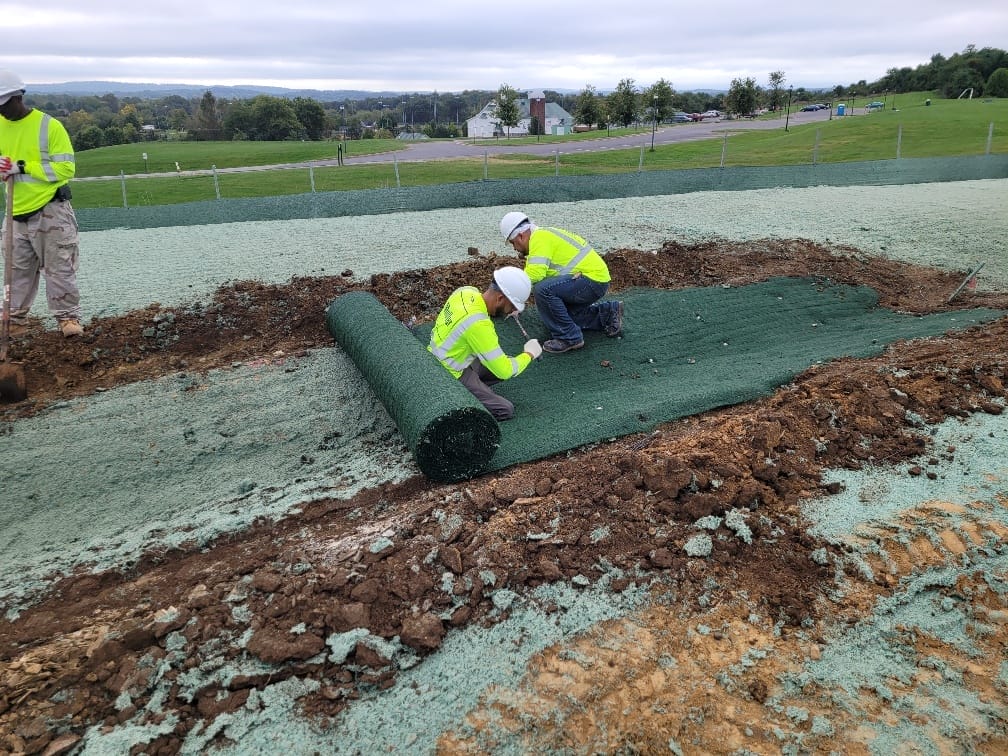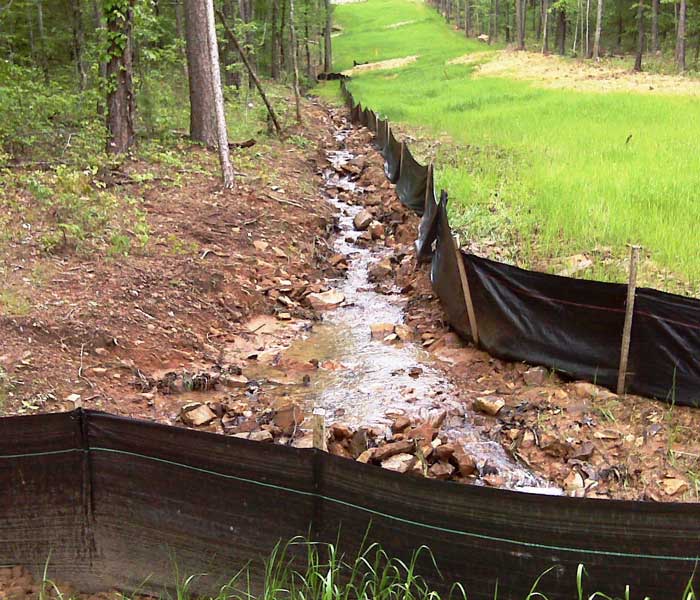Silt Fences: Your First Line of Defense Versus Erosion
Wiki Article
Ideal Practices for Disintegration Control in Construction Projects
Are you functioning on a building and construction job and concerned about erosion control? In this article, we will certainly lead you with the best practices for protecting against disintegration on your site. Memphis Erosion Control Solutions silt fences. Get all set to deal with erosion head-on and make sure the success of your building task.5 Necessary Erosion Control Strategies

To effectively control erosion on your construction site, you'll need to execute vital methods such as slope stabilization and sediment control measures. Slope stablizing is critical in preventing dirt disintegration on high slopes. Another effective technique is the usage of disintegration control blankets or mats, which are placed on the incline and aid maintain soil particles while allowing plant life to expand.
Efficient Sediment and Runoff Monitoring

You can successfully take care of debris and runoff in your construction job by carrying out correct disintegration control actions. Debris and runoff management is essential to stop disintegration and secure the surrounding setting. One effective procedure is the installment of silt fencings along the boundary of the building website. These fences assist to include sediment and prevent it from entering nearby water bodies. Another important practice is the execution of disintegration control coverings or mats. These blankets offer a protective layer on bare dirt, decreasing the impact of rainfall and preventing disintegration. In addition, using sediment basins or debris catches can assist to catch sediment and stop it from getting in stormwater systems. Routine maintenance of these measures is essential to guarantee their efficiency throughout the building project. This consists of cleaning and evaluating debris basins and routinely changing silt fences and erosion control coverings as needed. By implementing these disintegration control steps, you can effectively take care of sediment and runoff in your building and construction job, minimizing the effect on the atmosphere and complying with regulative requirements.
Trick Considerations for Slope Stablizing
When considering slope stablizing, it's vital to evaluate the surface and recognize potential areas of instability. You need to meticulously examine the slope's attributes, such as its composition, drain, and angle patterns. Search for indications of disintegration, such as subjected origins, splits, or down dirt. These indications can give you an idea of where stabilization steps may be required.Once you have identified the unstable locations, you can start carrying out procedures to support the slope. One typical method is the use of retaining walls or terracing to develop a collection of level steps, which can help disperse the weight and protect against more disintegration. One more option is to grow plants on the slope, as the roots can aid anchor the soil and control disintegration. Furthermore, installing disintegration control coverings or mats can give instant protection while vegetation comes to be well established.
It's critical to on a regular basis keep track of the maintained slopes to guarantee their efficiency. Watch out for any type of indicators of motion or disintegration, and take immediate activity if necessary. Routine upkeep, such as checking and fixing any type of damaged procedures, is also vital to guarantee long-lasting security.
Best Practices for Plants and Soil Security
One reliable way to protect plant life and dirt on inclines is by on a regular basis inspecting for signs of disintegration and taking immediate action if necessary. Beginning by examining the incline for any type of indicators of disintegration, such as revealed roots, bare dirt patches, or debris accumulation at the bottom. Implement disintegration control steps such as mounting erosion control coverings, mulching, or also building preserving walls if required.Implementing Appropriate Water Drainage Systems
When it comes to taking care of water circulation and protecting against disintegration, recognizing these variables is crucial. Steeper inclines can lead to much faster site web water circulation, boosting the danger of erosion and flooding. On the other hand, gentler slopes allow water to flow extra gradually, lowering disintegration capacity.Soil type additionally affects water drainage system style. Different soil types have differing degrees of permeability, affecting how water is soaked up and drained pipes. For circumstances, sandy soils tend to drain pipes faster as a result of their rugged texture, while clay dirts have a slower water drainage rate due to their portable nature. Recognizing the dirt kind aids in choosing suitable drainage strategies, such as utilizing absorptive products or installing French drains pipes. Furthermore, considering the dirt qualities aids stop waterlogging, which can lead to inadequate plant growth and damages to structures.
Verdict
In conclusion, when it comes to disintegration control in building and construction tasks, you must follow these best practices. Consider incline stablizing techniques to sites make sure the stability of the website. By adhering to these crucial practices, you can effectively regulate disintegration and make sure the success of your building and construction job.To successfully manage erosion on your construction website, you'll require to apply crucial strategies such as incline stabilization and sediment control actions. Slope stablizing is vital in stopping soil disintegration on high inclines. One more effective technique is the usage of disintegration control coverings or mats, which are positioned on the incline and help retain dirt bits while allowing plant life to expand. Another alternative is to plant vegetation on the slope, as the origins can aid secure the soil and control disintegration. Implement erosion control measures such as pop over to this web-site mounting disintegration control coverings, mulching, or also building keeping wall surfaces if needed.
Report this wiki page